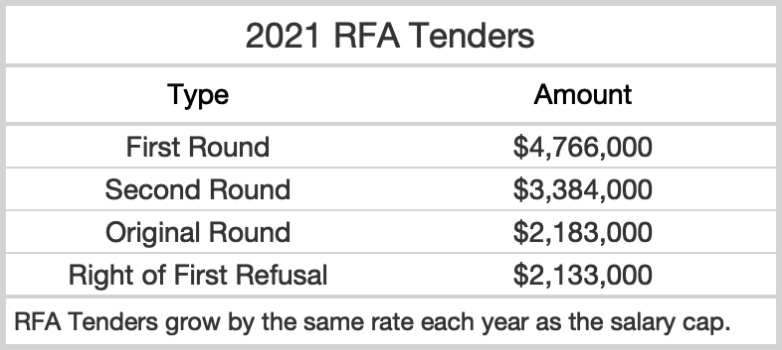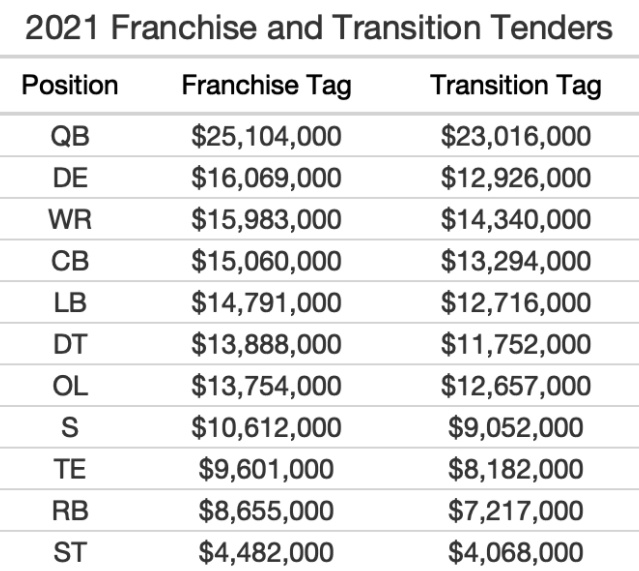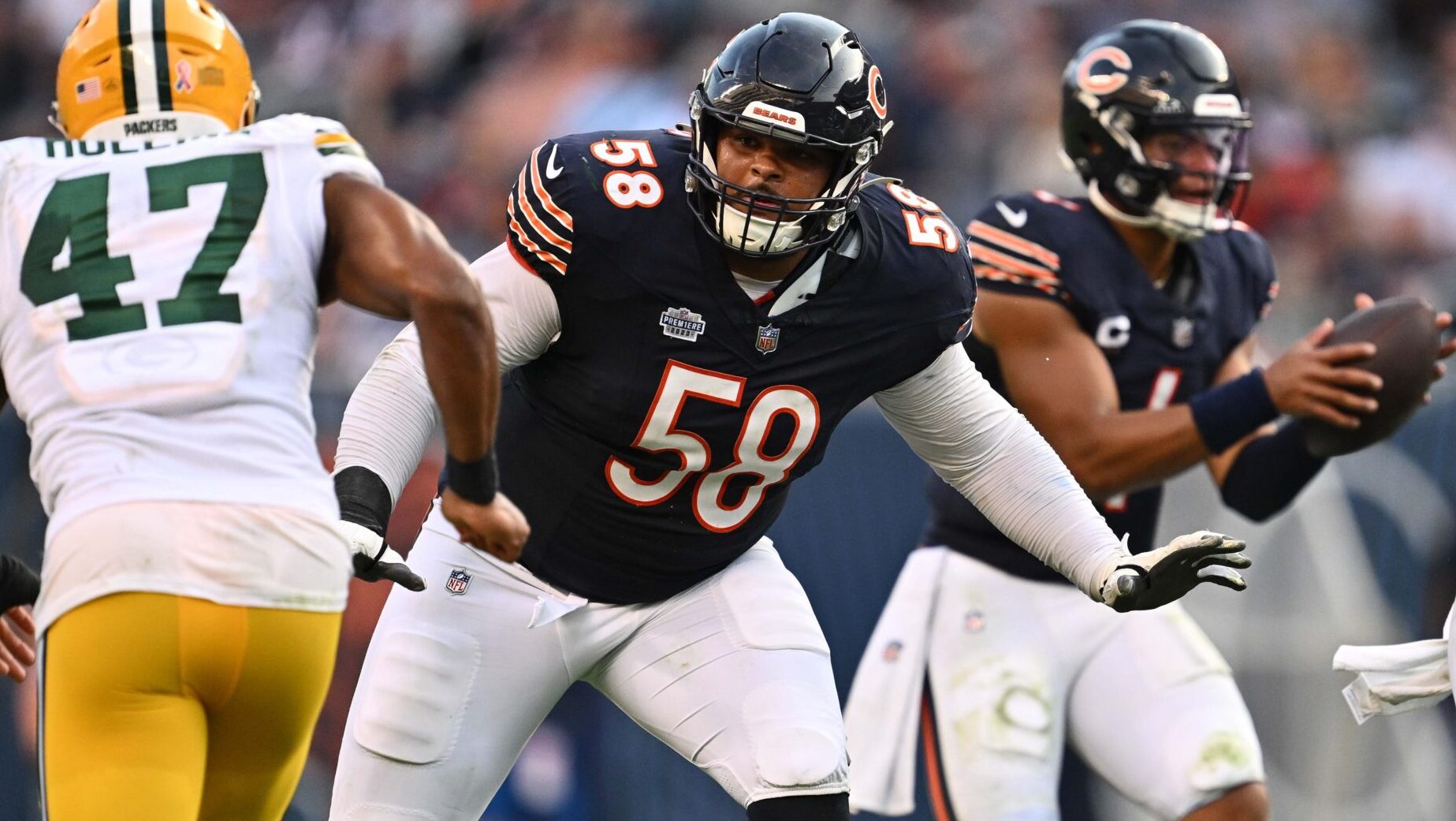Breakdowns
11/15/21
8 min read
NFL Contract Negotiations Part 2: Market Analysis

In part two of our three-part series on Contract Negotiations, we will focus on the process of evaluating and developing the "Market" for players on your roster that are up for a potential extension and for the players that will reach the "Open Market" as a result of free agency.
As we discussed in part one of this series, many strategic decisions must be made each year regarding how a club will decide to best acquire players to fill team needs. Many of the decisions made have set costs or values determined by CBA Negotiated Provisions. For example, suppose a club has an Exclusive Rights Free Agent (a player with an expiring contract and less than three accrued seasons). In that case, they have "Exclusive Rights" to tender that player to a one-year contract at the league minimum for a player with his "Minimum Salary Credits" (MSC).
Suppose a club has a player with three accrued seasons and an expiring contract. They have the Right of First Refusal to retain the player by tendering a one-year contract at the CBA designated amount for a Restricted Free Agent player (RFA).
Teams may issue a tender to their RFAs before the start of the league year; doing so allows the team the Right of First Refusal (the ability to match an offer sheet signed with another club).
If the club chooses not to match the offer sheet from another club, the team signing the player would be required to send a draft pick at the level the tendering club placed on the player (unless the player was tendered at the Right of First Refusal).
The club must choose one of the following tender amounts. In 2021, the RFA Tender Values were as follows:
Clubs that have a player with four or more Accrued Seasons that have an expiring contract can choose to give the player either a Franchise Tag or Transition Tender (club may use only one such tender — either Franchise OR Transition — each year). When using a Franchise Tender, a club has the choice of either a Non-Exclusive Franchise Tender or an Exclusive Franchise Tender.
- Non-Exclusive: Two First-Round Draft Picks if signed by another club. The player's original team shall be entitled to draft choice compensation of two first-round draft picks if another club signs the player to an offer sheet and the original club does not match.
- Exclusive: A player that was tendered the "Exclusive Franchise" Tag cannot negotiate with another club. The player would receive a one-year contract of the average of the five largest previous year’s salary at his position (in no case would it be lower than that year's Franchise Tender for a Non-Exclusive tag). The most recent example of using the Exclusive Franchise Tag was Dallas Cowboys QB Dak Prescott.
The Franchise Tenders are based on a CBA Negotiated Calculation of the top 5 salaries at a position over a five-year period. The Transition Tender amounts are based on a similar calculation using the top 10 salaries at a position. The Transition Tender allows for a slightly lower cost than the Franchise Tender, but the problem with the Transition Tag is that the club gets no compensation other than the ability to match the contract.
A club's decision process as to who to retain via Exclusive Rights Free Agency, Restricted Free Agency, Franchise, or Transition Tender helps shape their strategic plan in executing potential contract extensions for their players and/or if they will choose to enter the Free Agent Market to potentially acquire a player who has an expiring contract from another club.
Every club has a Football Administration department and some form of Football System/Analytics department that work together to track the necessary data points of contracts that allow a club to develop a database to study relevant market trends at each position.
As the General Manager and Head Coach determine the players that are on the current roster that they would like to extend, they depend in part on the market views and strategic plans to assess types of offers that may be presented to the agent(s) of players that would like to retain. Clubs use similar data and reports to determine the potential market levels for players that will test the Free Agent market after their current contracts from other clubs expire.
It is important always to remember that the beauty of Free Agency for the player is that it is indeed a matter of supply and demand that determines what a player representative will feel he can ask for in a free agent player negotiation.
Sometimes the demand is high for a player, and the market can become a bidding war between clubs. And there are times when the player gambles and turns an offer down from his current team, and then finds a limited market or no market at the level he and his agent planned.
It is important for the club to follow its policies and precedents and remain as consistent as possible with its philosophy. Clubs must determine what is in their best interest regarding floors and ceilings that they are comfortable offering to a potential Free Agent player. Agents are always going to do their best to create (or at least make the illusion) that there is a high demand for their client to create the highest market value and best possible contract for their player.
Many teams determine that the best plan of action for the sustainability of the club is to sit out the first wave of Free Agency and attempt to acquire Tier II & Tier III level free agents. These players often produce at an equal if not higher level and have a much better value than those acquired in the first wave of free agency.
Clubs often ask themselves – Why is a team willing to let this player go and not resign them? Much research goes into a club decision to pursue a Free Agent player. Character, scheme fit, age, injury, production, and cost from a cash and salary cap perspective are constantly evaluated.
Clubs also determine if they feel they will be able to acquire a player in the draft, via trade, or by other methods to fill a particular team need. Some teams choose not to use free agency to acquire players; instead, they draft, develop, and retain their own. Those clubs that choose to acquire a player in Free Agency must determine the level at which they are willing to pay a player (Contract Length/Guarantee/3 Year Cash/APY) and the structure of such contract in terms of future salary allocations to acquire them. Whether a club is extending one of its own or pursuing a player in free agency, it reviews past contracts at a similar position.
When a club's football administration team breaks down daily contracts into their database, they are tracking many parts of the make-up of the contract. Below is a list of common information from contracts that they would track:
- Length (# of Years)
- Contract Structure
- Bonus Types (Signing/Option/Roster etc.)
- Guarantee Types (Skill/Injury/Salary Cap)
- 3 Year Cash (if applicable length)
- Splits
- Offset
- Injury Waivers
- Cash Flow/Payment Schedules
- Total Contract Value
- Average Per Year (APY)
- Incentives/Escalators ("Backside")
- Maximum Value of Contract
- "Funding" (if applicable)
- Language Studies (Categories/Structure)
- Analytical Analysis of Contract Value vs. Production
Most clubs have developed and built a system allowing all recorded data to be broken-down into studies or views that will enable decision-makers to review market trends at each position.
Before determining a floor or ceiling for a contract proposal, a club will do a "deep dive" on the available data points. During each season, the Football Administration and Analytics teams will work together to develop "Market Analysis" documents for review by the team’s General Manager and decision-makers with all of the data they recorded from daily contract inputs.
These studies can include:
- A breakdown of Market Tiers by position [VSB/ 1 Year/ Tiers or Levels I/II/III]
In general, Tiers are determined by contract levels previously paid. Each club has its criteria for Market Tiers
-
- Market Analysis by position rank and scheme fit [Starter/Back-up/#3 etc.]
- Detailed Market Breakdown vs. Executive Summaries
Charts of positional Market range for players
- Player Specific Markets – based on individual comparables determined by the club
- Total Contract Value vs. Extension Contract Value "New Cash"
- Cash Flow Analysis – Remember "Cash is King"
- Ideal Contract Lengths based on Age/Injury History/Production
Clubs will utilize these Market Studies to determine the best approach and the cost of both salary cap and cash that will work within their clubs global strategic plan. There are many different approaches by teams concerning Free Agency.
In the 3rd and final part of this series, we will discuss building an initial proposal for a player renegotiation/extension or a free agent contract proposal. We will also look at some of the key parts of negotiating with a player's agent to achieve a "Win/Win" deal for the club and the player.










